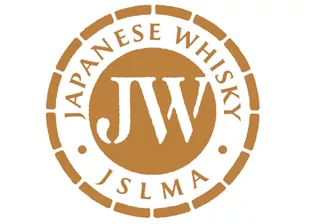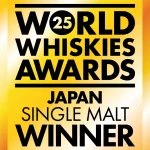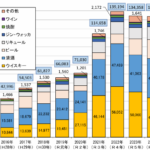Japanese whisky logo established and maintenance begins with the aim of becoming a legal entity.

Image credit: Japan Western whisky Brewers Association
In February 2021, the Japan Western Liquor Brewers Association established voluntary standards for Japanese whisky.
In order to enhance their effectiveness, the “Japanese whisky Logo ” was established and announced in March 2025.
The logo will make it easier to identify “Japanese whisky” to buyers in Japan and abroad.
In the future, we will work toward the legalization of the “Voluntary Standards” and aim for “Geographical Indication (GI) designation” under the Alcoholic Beverage Industry Association Law.
However, the National Tax Agency seems to be quite reluctant to legislate, not wanting to dampen the booming sales of whisky both in Japan and abroad.
It is distressing to see fake whisky-like spirits made exclusively from foreign spirits, or even whisky-like spirits with only 10% whisky, being sold abroad as Japanese whisky and being perceived as Japanese whisky.
In the past, the sale of fake Japanese whisky overseas has been a problem, with less than 20% of products labeled as [Japanese whisky] being sold in stores in Los Angeles and New York in the United States, even though they do not meet the standards. Japanese people obviously find the kanji characters strange and the names strange, but of course, local people cannot tell the difference.
In fact, the author was told by a foreign guest, “I drink Japanese rice whisky at home,” and when asked what brand it is, he had never heard of it.
When I looked up the name, I found that it is indeed sold under the label “Japanese whisky,” but the domestic manufacturer does not have a license to produce whisky and is commissioned by an overseas supplier to produce the whisky.
The actual content is rice shochu, which is considered “whisky” for U.S. liquor tax purposes, and since it is distilled in Japan, it is sold as Japanese whisky.
These imitations are sold abroad as whisky with strange names, strange kanji, and strange contents. Several Japanese whisky makers are still involved in this situation.
Another problem is that blending domestically produced grains makes Japanese whisky, but it is difficult for small distilleries to do so.
Many distilleries are
- production focused on single malt.
- Produce grain domestically and make their own blends
- Procure grain domestically and make Japanese blends
- Aged overseas grains for at least 3 years in Japan and used for blended products
This is done in Japan.
1.2. 3. is Japanese whisky without any problem.
2.is easy for large distillers, but there are only a few distillers in Japan who have more than one distillery. It is also quite difficult to produce grains made from different grains in the same facility.
3.However, some distilleries, such as Yoshida Denzai Distillery, have declared that they will supply grains to the domestic market, and such distilleries may appear in the future.
4.As for Suntory and Nikka, Suntory and Nikka also produce such products, and many craft distilleries do so.
This is not “Japanese whisky” under the voluntary standards of the union. However, it is a form of effort by the blenders to make it inexpensive in terms of price and to blend it beautifully with the unique malts of the distillery.
I feel that it is not all bad in general, but it is no longer a matter of ethics, which is why it has become so complicated.
I think that the legalization will continue to be worked on so that not only “Japanese whisky” but also ethical and delicious “domestic maker’s whisky” will be in a good shape for both.



